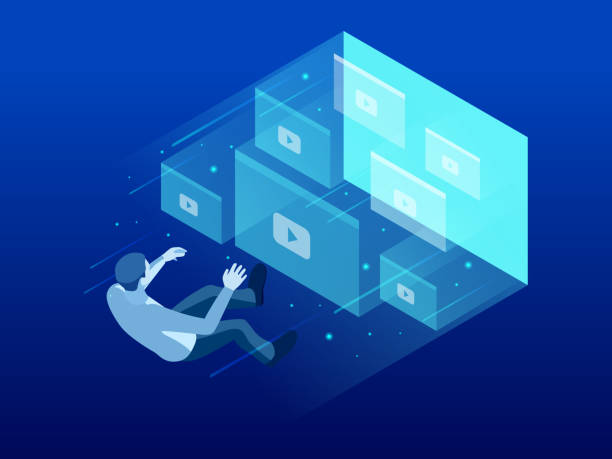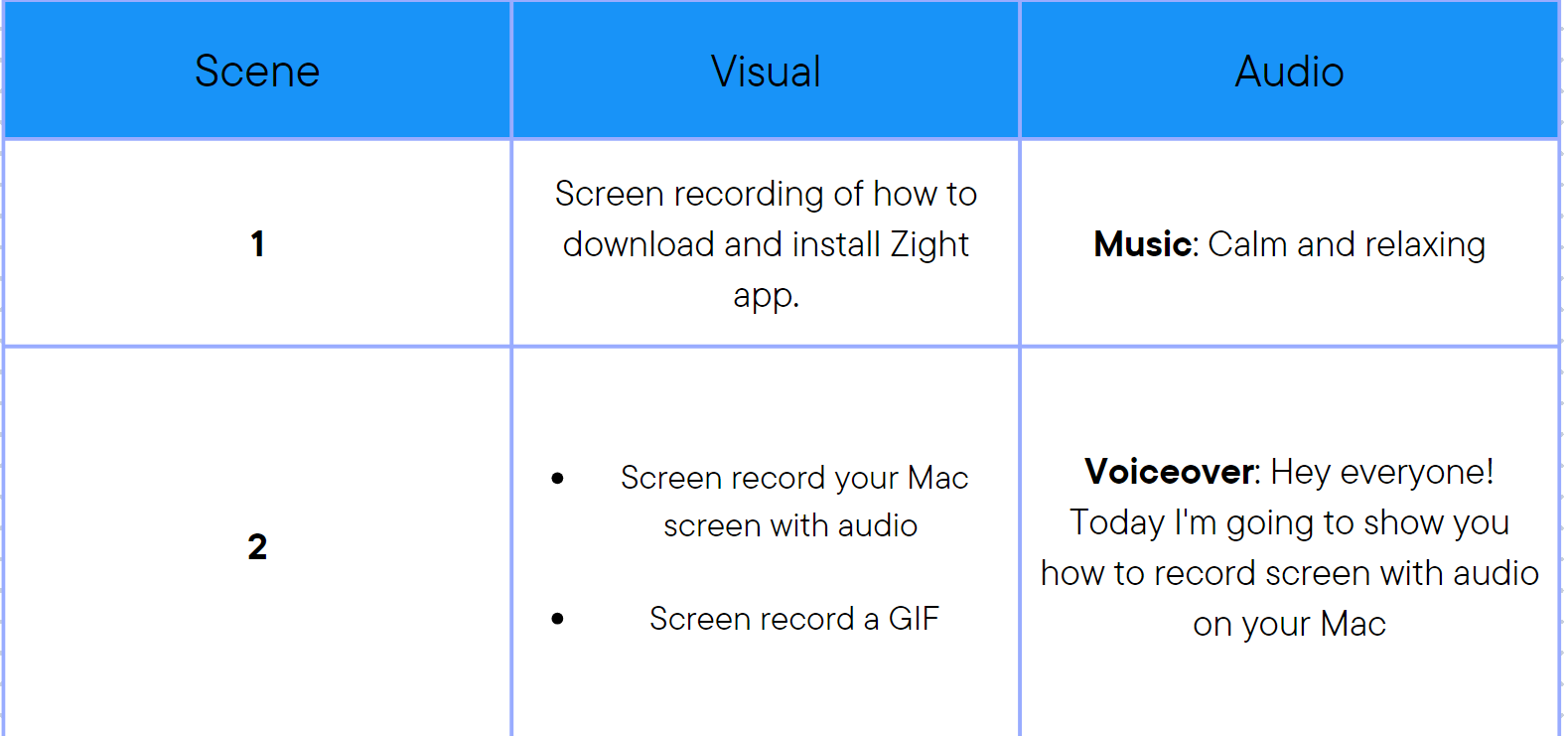Unleash the Power of Video to transform your customer experience and drive business goals!Discover the compelling world of knowledge base videos, where engagement meets effectiveness. We’ll dive deep into creating dynamic content that not only captivates your audience but also empowers them with valuable insights and seamless support.
Get ready to explore diverse video formats, master storytelling techniques, and learn how to optimize your content for maximum impact. We’ll uncover the secrets of crafting compelling introductions, keeping viewers hooked, and guiding them towards a positive customer journey. Learn how to leverage video analytics, mobile optimization, and A/B testing for data-driven decision-making, shaping your video knowledge base into a powerful asset that boosts customer self-service, reduces support costs, and elevates your brand. Let's get started!
What Exactly is a Knowledge Base Video and How Does it Enhance Customer Experience?

A knowledge base video is a concise, informative video that provides answers to frequently asked questions, instructions on how to use a product or service, or troubleshooting guides. By integrating video into your knowledge base, you can enhance the customer experience by offering engaging and easily digestible content that caters to different learning preferences.
Design:
- Clear, concise, and visually appealing
- Well-structured with a logical flow
- Use of screen recordings, animations, live-action footage as appropriate
- High-quality visuals and audio
Elements:
- Catchy intro and outro
- Visual aids (graphs, charts, animations)
- Callouts and annotations
- Background music and sound effects
- Narration by a knowledgeable person
- Brand identity - include company logo, use brand colours
Product Demo Videos

Product demo videos are a powerful way to showcase your product's functionalities, features, and benefits in action. These videos serve as virtual walkthroughs, visually guiding potential and existing customers through the product experience.
Design:
Feature a professional intro screen introducing the product and its capabilities. Start with the core functionalities of the product to retain focus. Each segment may conclude with clear, visually impactful calls-to-action.
Elements:
- High-quality visuals to showcase the product realistically.
- Dynamic editing for transitions to highlight different elements and usage scenarios.
- Screen recordings that showcase actual workflows for authenticity and comprehension.
- Concise captions and call-outs for quick product usability takeaways.
- Most useful for newly launched products or introducing advanced product functionalities that require visual guides for proper utilization, or can serve as sales videos for your ""business"".
Troubleshooting/FAQ Videos

These are videos addressing the common challenges your customers encounter or questions they raise about your product or service. Using video as a tool to navigate customer service and technical issues visually.
Design:
Videos that focus on clearly stating the problem and providing steps with simple solutions are more effective, providing alternative steps or options and guiding customer with solutions they can immediately put into action to enhance your customer journey.
Elements:
- Step-by-step format, offering clear solutions
- Animations to visually show common issues
- Live-action demonstrations with detailed examples
- Easy to navigate with specific instructions
- To empower customers for easy troubleshooting with quick solutions in hand.
How-to Guides
Create focused knowledge base video tutorials, guiding customers or employees, on how to accomplish specific tasks in their product experience or within a company or ""business"" setting. This helps build a dynamic library of interactive educational material for self paced training or education, in the service of greater adoption for your product or service or the building of ""knowledge base"" material for an internal company workforce, making for an enriched customer journey.
Design:
Screencast recordings help narrate steps sequentially as the video progresses. An engaging visual walkthrough helps engage and improve retention for viewers. These can feature interactive elements and questions to reinforce understanding.
Elements:
- Narrated, screencast demos with on screen text
- Animated explanations with illustrative sequences
- Live action footage as needed - if a skill is needed outside the computer or for use in specific context
Feature Highlight Videos

Focus your knowledge base video efforts by crafting highly-focused feature highlight videos, offering customers concise guides explaining individual functionalities of your product in great detail and visual richness. When customers want to deepen their product engagement by moving beyond basics, the feature highlight ""videos"" enhance adoption rates and overall product usage.
Design:
Videos will begin with a captivating feature summary. Key aspects of this specific function or feature are then detailed. Videos then close by reminding users where and how to access it or engage with it in real product scenarios.
Elements:
- Slow-motion close ups
- Animation explaining unique functionality
- Use of testimonials or success stories to provide evidence
- Great for promoting new updates or highlighting niche product benefits or product upgrades, which help educate users to drive wider product usage.
Process Explanation Videos
Your business operations, products, services may include various underlying workflows or processes for end customers to understand how things get done within the larger organization. By presenting ""content"" with visually clear processes, customers will gain insights and enhance their knowledge of how things are done behind the scenes for higher product affinity and service satisfaction. These videos use animations or visuals and infographics that clarify concepts, building customer understanding.
Design:
Clear process visualization, broken into smaller sections. Visualize each step, explaining the benefits for customer understanding or expectations from customer interaction, including potential delays or milestones. The purpose is transparency with knowledge building, which builds customer trust and patience.
Elements:
- Animations highlighting each workflow stage
- Flowcharts illustrating process timelines, relationships, or hierarchy
- Icons representing roles, actions or steps
- Document complex, recurring tasks for both the business and external customers
- Break down complex customer or employee onboarding processes
- Streamline business documentation of SOPs
Expert Interview Videos

Tap into the power of industry thought leadership for enriching your ""video"" based ""knowledge base"" offerings, building both engagement and authority in your field. Expert interview ""video knowledge base"" content serves to elevate your thought leadership position.
Design:
Videos feature recognized industry leaders providing valuable commentary on relevant topics related to your domain. Ensure high production values for building immediate authority. Interview segments could focus on trends, customer use cases, and advanced product knowledge and use, providing enriching ""content"" for users of the knowledge base videos.
Elements:
- Formal setting for credible presentation of expert ""content""
- Professionally produced and edited video
- High quality graphics and background that build business trust
- Transcripts of the key takeaways
Animated Explainer Videos
Animation-based videos provide a unique opportunity for businesses and organizations to explain challenging concepts in a simple and creative way, appealing to various learners across different knowledge base experiences. By simplifying abstract processes with appealing visuals, your business is able to expand comprehension of your knowledge base video content.
Design:
Videos utilize vivid graphics, catchy animations, background music for making it attention-grabbing and knowledge boosting, but requires pre-production planning to get animations right. Animated sequences showcase the use-cases for product functionality, explaining use cases or scenarios in context.
Elements:
- Motion graphics - visually attractive for retention
- Short and snappy dialogue style that’s highly effective
- Character development - visual aids for personalization
- Catchy audio design that helps reinforce key information
Whiteboard Animation Videos
Another highly effective method for enriching your knowledge base videos lies in harnessing the dynamic visuals of whiteboard animations. With its intuitive appeal, whiteboard videos present a clear way of presenting data, business processes or key aspects of your knowledge base library.
Design:
step by step visualization for ideas explained or specific product functionalities, for engaging customers through dynamic animation of concept drawings on a whiteboard, rather than having pre-created content or videos to make it highly authentic, though needing scripting well to ensure flow is aligned to ""video knowledge base"".
Elements:
- Hand drawn visualization and sequential flow - creates unique visual story
- Use of real voice narrations that humanize content
- Emphasis of key points in various parts of video
- Use this type for more visually interactive, casual knowledge base needs. This style enhances information absorption.
Microlearning Videos

Embrace micro-learning as part of knowledge sharing ""videos"", providing ""knowledge base"" snippets that cater to time pressed users in today’s fragmented world of business, allowing viewers to efficiently get information in small, manageable segments. The small micro learning videos contribute to larger knowledge base video repository, for creating robust ""video knowledge base"" offerings that cater to various needs and preferences for enhancing customer journeys.
Design:
Videos are 3-5 minute in length, with specific bite sized takeaways around single themes, focused around singular use cases for ease of absorption. For viewers to find specific information they seek for knowledge or skill boosting, your knowledge ""base"" can feature categorized video snippets for effective consumption, which provides ""business"" owners with highly focused targeted solutions to engage with as the knowledge videos expand.
Elements:
- Concise and focused with limited takeaways, allowing for clear learning goals
- Strong visuals that condense text based data
- Multi language functionality built into the design
- Mobile-first approach since most access is during breaks or transit
Screencast Tutorials
These knowledge base videos use real time demonstrations through screen recordings for enhanced effectiveness, providing a clear visual walkthrough guide for customers with the aim to quickly gain clarity of new functionalities, use features with ease, or understand aspects of your ""business"" processes by seeing these functions performed through video instruction.
Design:
A ""video"" tutorial design in a knowledge base requires that the purpose is set clearly in the ""intro"" so user understands video context. The actual tutorial then begins with the right set up so all needed information for users to engage are pre-shared - browser choice, program installation, data input required, etc. This enables users to execute and follow along the tutorial ""content"", leading to increased effectiveness in gaining quick understanding of steps, use cases or problem scenarios for which video is meant.
Elements:
- Highlighting of mouse and keystroke use within video content
- Clean visual aesthetic for tutorials
- Ideal for guiding users or training teams or internal staff to use new technology, update themselves to newly added software features, explain the step-by-step processes around critical operations of your ""business"".
Case Study Videos

In the business world, your knowledge base needs to provide insights about the impact of your product, highlighting value through the lens of client wins. Case study videos that combine narrative and data provide effective content formats that allow potential customers to witness positive outcomes based on your client’s successes, building both trust and confidence for future buyers.
Design:
The format begins with highlighting the business problem or use-case, next provides the actual client story using customer interviews and data that backs their outcomes for proof of success.
Elements:
- Real testimonials from satisfied users are powerful elements
- Blend storytelling techniques with relevant visual material
What is a knowledge base video and how does it work?
A knowledge base video, in the context of business, is a short-form video specifically designed to answer a customer question, explain a concept, or guide users through a specific task related to your product or service. Unlike marketing videos focused on promotion, knowledge base videos are centered on providing content value and enabling self-service. A well-structured video knowledge base becomes a powerful tool for customer journey enhancement, reducing reliance on customer support.
Design:
Aim for clarity and conciseness. Knowledge base videos should get straight to the point, providing focused answers and solutions. They're often visually driven, incorporating screen recordings, animations, or even simple text overlays to illustrate the steps involved.
Elements:
- A concise introduction outlining the topic/problem.
- Step-by-step instructions or clear explanations using visuals.
- A strong call to action (e.g., visiting a help center article for more details).
- On-screen text, highlights, or annotations for better clarity.
When to Select:
Use this type for explaining product features, troubleshooting common issues, or answering frequently asked questions in your knowledge base.
Boosting customer self-service rates using video knowledge base

Knowledge base videos act as on-demand support representatives available 24/7. By providing readily accessible solutions to common customer problems, your business empowers customers to troubleshoot on their own, leading to greater satisfaction and reduced costs associated with live support interactions.
Deep Dive:
- Increased Convenience: Customers can find answers instantly, eliminating wait times for email or phone support, thus optimizing the customer journey.
- Improved Comprehension: Visual learning, facilitated by video demonstrations, helps customers understand solutions more quickly compared to reading text-based documentation. This especially benefits visually-driven learners.
- Enhanced User Experience: Integrating videos into your knowledge base creates a richer, more interactive experience, driving positive sentiment and engagement with your brand.
- Measurable Results: Tracking video engagement (e.g., view time, completion rate) allows businesses to measure the effectiveness of their video content in boosting self-service rates. This data provides valuable insights for continuous improvement of your video content strategy.
Strategies for building a comprehensive video knowledge base for your products
Creating a comprehensive video knowledge base requires careful planning and strategic content creation. It’s not just about creating random videos, but building a curated library designed to address the complete range of customer needs and potential issues associated with your products. This strategic approach positions your knowledge base as a valuable resource and builds brand trust.
Deep Dive:
- Conduct Thorough Customer Research: Analyze customer support tickets, live chat logs, and user feedback forums to pinpoint the most common customer inquiries and pain points. This helps identify knowledge base video topics.
- Define Core Video Categories: Organize your video knowledge base into clear categories, making it easier for customers to navigate and find specific information. This improves user experience and promotes self-service.
- Prioritize High-Impact Video Topics: Start by addressing the most frequent and high-impact questions. This ensures you create video content that has the maximum positive impact on your support workload and customer satisfaction.
- Establish a Content Production Workflow: Develop a structured process for planning, scripting, filming, editing, and publishing video content to ensure consistent quality and timely delivery of new videos for your knowledge base.
- Create a Style Guide: Establish guidelines for video visuals (branding, colors, animation style, etc.) and narration (tone of voice, terminology, etc.) to maintain a consistent and professional brand identity throughout your video knowledge base. This consistency ensures a smoother customer journey and fosters recognition.
How Video Knowledge Bases Drive Self-Service Rates

The fundamental objective of a knowledge base, in the context of business, is to empower customers. Videos take this empowerment to the next level by providing customers with the ability to find answers on their own, at their convenience. This shift in control greatly contributes to building trust and establishing your brand as a customer-centric entity.
Deep Dive:
- Proactive Problem Solving: By addressing commonly encountered problems through your video knowledge base, you equip customers to address their issues without needing to interact with your support team. This makes for a more efficient and empowering customer journey.
- Reduced Customer Frustration: Waiting for support responses is a significant cause of frustration. Providing instant solutions through video in your knowledge base helps resolve issues quickly, reducing overall customer frustration and promoting positive brand associations.
- Increase Customer Independence: Knowledge base videos effectively foster self-reliance among users, creating a sense of mastery over your products or services. Empowered customers often feel greater satisfaction and loyalty towards your business.
- Improved Customer Satisfaction (CSAT) Scores: Studies demonstrate a correlation between strong self-service resources, like a well-crafted video knowledge base, and increased customer satisfaction. Providing tools that streamline the customer journey positively impacts key performance indicators.
Leveraging Video to Minimize Customer Service Tickets
For businesses of all sizes, a spike in customer support inquiries can put significant strain on your support team. This translates to longer wait times for customers and potentially impacts overall satisfaction with your services. A video knowledge base effectively acts as a ""first line of defense,"" answering commonly asked questions before they become support tickets, ensuring a seamless customer journey.
Deep Dive:
- Front-line Solution Center: An extensive video knowledge base acts as a readily accessible ""FAQ section,"" addressing typical issues related to product setup, usage, billing, or general queries. This diverts customers from phone calls or email support, thus managing the flow of the customer journey in a structured manner.
- Decreased Ticket Volume: As customers can resolve simple issues on their own using the video knowledge base, there’s a noticeable decrease in the number of support tickets your team needs to manage. This optimization of business processes frees up resources for complex problems and personalized support where it's truly needed.
- Improved Support Team Efficiency: When support agents are freed from handling basic inquiries through a well-utilized video knowledge base, they can dedicate more time to more demanding tasks or high-priority customer support requests. This specialized attention at specific touchpoints can greatly elevate the customer journey
- Increased Cost Savings: Reducing support volume translates to decreased operational costs for your business. This is especially significant as you scale, as each avoided support ticket can represent considerable savings in terms of staffing, training, and resource allocation.
Identifying Key Areas for Video Content Creation

Before diving into knowledge base video production, a foundational step involves understanding your customers and their needs. Thoroughly mapping the customer journey allows you to pinpoint pain points, common questions, and areas where video content can have the greatest impact.
This involves analyzing customer support tickets, conducting surveys, and reviewing website analytics to understand how customers are interacting with your brand and identifying gaps in their knowledge.
Design:
Your customer journey map should be visual and intuitive, demonstrating various touchpoints customers have with your business. This can be in the form of a flowchart or timeline highlighting key stages, from initial awareness to product purchase and beyond. Each stage should include insights on typical customer questions, pain points, and desired outcomes.
Elements:
- Customer Personas: Create detailed customer profiles outlining their demographics, pain points, needs, and behaviors.
- Touchpoint Analysis: Analyze each interaction customers have with your brand, including website visits, social media engagements, email interactions, and customer support interactions.
- Data Collection: Gather data from various sources like website analytics, CRM systems, customer surveys, and social media listening tools.
When to Select:
This crucial first step should be completed before any video content creation begins. It provides a strong foundation for building a relevant and impactful video knowledge base, guiding the focus towards topics that truly address customer needs.
Strategically Planning Your Video Knowledge Base Development

Once key knowledge areas have been identified through customer journey mapping, it's time to plan the production of your knowledge base video content. This is where a content calendar comes into play. A content calendar ensures consistency in video release, helping you prioritize high-impact videos and stay aligned with overall business goals.
Design:
The content calendar can be created as a spreadsheet or utilizing project management tools. It should clearly outline each video topic, its intended audience, the production timeline, publishing date, and any promotional strategies planned.
Elements:
- Video Topic: Clearly define the specific area of knowledge that will be covered in each video.
- Target Audience: Specify the customer segment or group the video is designed to address.
- Production Timeline: Set clear deadlines for scripting, filming/animation, editing, and review stages.
- Publishing Schedule: Establish a regular publishing cadence to maintain audience engagement and consistent growth of the video library.
- Promotion Plan: Determine how each video will be promoted, whether through email marketing, social media, or website integration.
When to Select:
The content calendar should be built directly after mapping the customer journey, providing a roadmap for video production and aligning your content creation efforts with business objectives.
Focusing on High-Impact Areas for Customer Success
As businesses often face resource constraints, it's critical to prioritize which video topics to tackle first. Focusing on high-impact areas ensures you're addressing the most pressing customer needs and creating video content that will deliver maximum value. This involves identifying knowledge gaps that lead to the highest volume of support tickets, analyzing areas where customers are experiencing the most difficulty, and evaluating topics that can directly influence customer satisfaction and sales conversion.
Design:
A priority matrix can be used to visually represent video topics, with factors like customer impact and business value informing the decision-making process. Videos addressing critical issues impacting a large customer base should be placed higher on the priority list.
Elements:
- Impact on Customer Success: How does the video topic address critical pain points and drive customer satisfaction?
- Frequency of Customer Questions: How often is the support team or website search engine receiving queries related to this topic?
- Relevance to Business Goals: Does the video content align with key business objectives, such as increasing sales conversion, reducing churn, or improving product adoption?
When to Select:
This prioritization exercise should be undertaken immediately after building the content calendar. It will help guide the sequencing of video production, allowing your team to focus resources on the topics that will yield the most significant results.
Implementing a Structure for Easy Navigation and Discoverability

As your video knowledge base grows, proper organization is crucial for easy user navigation and discoverability. A well-structured video library empowers your customers to quickly find the answers they need, leading to a smoother support experience and increased self-service rates. This organization must extend beyond your website to wherever your knowledge base video content is hosted.
Design:
Think about intuitive category labels and clear hierarchies when structuring your library. Leverage playlists, tags, and a comprehensive search functionality to optimize the user experience.
Elements:
- Categories and Subcategories: Group your videos based on broad topics (e.g., Product Setup, Troubleshooting, Account Management) and further subdivide them as needed.
- Tags: Utilize keywords and tags to facilitate topic-specific searching and filtering.
- Playlists: Create playlists for specific workflows or feature guides, offering a guided path through related video content.
- Search Functionality: Implement a robust search feature within your video library so users can easily locate the answers they need using keywords or phrases.
- Consistent Thumbnail Design: Develop a consistent look for video thumbnails that uses clear icons and text overlays to give users a quick understanding of each video's content.
When to Select:
The organization of the video library should be designed concurrently with video production, ensuring consistency and a positive user experience from the outset.
Expanding Reach with Multilingual Video Content

In an increasingly global market, translating your knowledge base video content can be a valuable investment in expanding your audience and boosting customer satisfaction in different regions. Offering videos in the languages spoken by your target markets demonstrates a commitment to inclusivity and personalized service.
Design:
When planning for multilingual video content, consider whether you will utilize voice-overs, subtitles, or both. This will influence the workflow for video production and budget allocation.
Elements:
- Target Language Selection: Research and analyze your customer base to identify the most relevant languages to target for translation.
- Voice-Over or Subtitling: Determine whether you will use native voice-over artists to dub your videos or opt for accurate and professionally translated subtitles.
- Cultural Nuances: Be aware of cultural sensitivities and adjust translations and visuals where needed to ensure maximum relevance and engagement.
- Quality Control: Ensure translation accuracy through careful review by native speakers.
When to Select:
Incorporating translation efforts should be part of your initial strategy if you are targeting a multilingual customer base. Retrofitting existing videos for translation is often more complex and less efficient than planning for it from the start.
Crafting Compelling Video Introductions
The first few seconds of your knowledge base video are crucial. A compelling introduction grabs viewer attention, establishes the video's purpose, and encourages continued engagement. It sets the stage for a positive learning experience and ultimately, successful knowledge transfer. Think of your intro as your elevator pitch for the knowledge you're about to share – make it count.
Design:
Consider using a captivating visual, a bold statement, a relevant question, or a brief animation to hook the viewer. The design should be aligned with your brand aesthetic and create a sense of anticipation.
Elements:
- A clear and concise statement of the video's topic and what the viewer will learn.
- Branding elements like your logo or brand colors to reinforce identity.
- Background music or sound effects to create an immersive experience.
- Optional: A brief overview of the video structure to guide the viewer.
When to Select:
Use compelling intros for all types of knowledge base videos, especially when introducing complex topics or addressing a broad audience.
Defining Optimal Video Length for Knowledge Transfer

Respect your viewers' time – long, rambling videos often deter viewers from gaining any significant knowledge. Aim for conciseness. While comprehensive content is important for your knowledge base video library, information must be effectively categorized into individual business videos with a sharp focus for optimal impact.
Deep Dive:
- Prioritize key takeaways: Ensure every minute in the video actively contributes to achieving the main learning objectives. This is particularly important if you are a business selling to customers with demanding lifestyles or from global audiences.
- Modular approach: Break down lengthy topics into shorter, manageable video segments. This also increases usability of your knowledge base video library – when customers have an easily navigable and logically indexed set of resources, troubleshooting individual steps or revisiting topics is friction-free.
Building Rapport with Your Audience Through Language
Building a connection with your viewers is paramount for effective knowledge base videos. A conversational tone helps humanize your brand and foster a sense of trust, particularly crucial when dealing with business customers seeking solutions.
Design:
Imagine you're having a one-on-one conversation with your target audience. Address the viewer directly (using ""you""), ask questions to encourage engagement, and avoid a stiff, overly formal tone.
Elements:
- Use contractions and everyday language.
- Incorporate anecdotes or personal stories that relate to the topic.
- Inject a touch of humor if it's appropriate for your brand and audience.
- Speak naturally and authentically, as if you're chatting with a colleague.
- Strive to make your knowledge base video content engaging and enjoyable to watch.
When to Select:
This approach is best suited for most knowledge base video scenarios, as it fosters engagement and makes the viewer feel more connected to your brand.
Incorporating Personality and Humor (Where Appropriate)
While professionalism is important in a business context, injecting a touch of personality can make your knowledge base videos far more memorable and relatable. Authenticity can set you apart and elevate your video knowledge base from the competition.
Design:
Consider your brand's personality and find ways to reflect it subtly within the script. Are you known for being quirky, friendly, or serious? Let your unique voice shine through, but ensure it remains aligned with your business goals.
Elements:
- Introduce the speaker (if there is one) and share their expertise briefly.
- Use natural expressions and gestures if featuring someone on camera.
- Incorporate subtle humor that's relevant to the topic or your audience.
- Share a behind-the-scenes glimpse of your company culture (if relevant).
- Showcase your brand's human side through personal stories or anecdotes.
When to Select:
Consider adding personality and humor when creating ""about us"" videos, introductory product tutorials, or explaining company policies in an engaging manner.
Ensuring Alignment Between Narration and On-Screen Content

Knowledge base videos, by definition, rely on a powerful synergy between visuals and narration. Without this careful alignment, the customer journey can become fragmented, leaving viewers confused. Visuals play a pivotal role in demonstrating complex information, processes, and scenarios.
Deep Dive:
- Begin by outlining your visual storyline in a storyboard before writing the script.
- Ensure that each spoken sentence corresponds to a clear visual representation.
- Use screen recordings, animations, or illustrations to complement the spoken explanations.
- Don't overload the screen with too much information at once.
- Allow for visual pauses to give the viewer time to process the information.
Streamlining the Onboarding Process
A well-crafted video knowledge base can transform your customer onboarding experience. New customers often feel overwhelmed by new products or services, but videos can simplify the process by delivering information in an accessible and engaging format. Onboarding videos significantly reduce customer support tickets as users can find answers themselves.
Design:
Keep the design clean and minimal, focusing on clear visuals that guide the user through the steps involved in getting started with your product or service. Avoid cluttering the screen with excessive text or distracting elements. The focus should always be on delivering a seamless and user-friendly experience. This contributes towards a positive first impression of your brand and a seamless onboarding journey, encouraging users to explore your product further.
Elements:
- Welcome Video: Start with a friendly welcome message and an overview of what the customer can expect to learn during the onboarding process. This builds rapport and creates a connection.
- Product Tours: Showcase the key features and functionalities of your product through screen recordings or animated demonstrations. This type of video knowledge base content excels at visually demonstrating the value proposition.
- Step-by-Step Guides: Break down complex processes into manageable steps using concise video tutorials. This is particularly helpful for software products with multiple features.
When to Select:
Select this type of knowledge base video if your product requires some level of explanation to get started. Complex software, platforms with unique features, or even physical products that need assembly benefit significantly from this format.
Creating Interactive Tutorials

Interactive tutorials take video knowledge base content to the next level by providing users with hands-on learning experiences. These tutorials often involve clickable elements, quizzes, or branching paths that allow users to actively engage with the material. Interactive video content offers higher levels of user engagement and better knowledge retention, leading to more effective training and onboarding experiences.
Points to Deep Dive:
- Engagement through Gamification: Explore techniques for integrating elements of gamification such as points, badges, or leaderboards to motivate users and improve their learning outcomes. For instance, during a tutorial, users could be challenged to find specific features of the software; with every correct response, they unlock further knowledge base content.
- Interactive Simulations: Demonstrate tasks or procedures through realistic simulations that allow users to practice in a risk-free environment. The knowledge base of a software company can provide simulated onboarding training for a new client's staff, offering them an opportunity to perform complex steps without disrupting the live platform.
- Branching Scenarios: Design video tutorials with multiple pathways based on user responses or choices, tailoring the learning journey to their specific needs. For example, a software development video knowledge base could guide users to the best debugging tools based on the specific programming language they are working with.
businesses understand gaps in their training material, improving it based on user responses.
Developing Training Modules for Employees
Employee training is critical for organizational growth and efficiency. Video knowledge base platforms provide an excellent platform to deliver consistent training to employees across all departments. From company policies to software tools and procedures, videos streamline the process and ensure consistent knowledge transfer. This centralized platform empowers employees to access information independently, fostering self-reliance and encouraging continuous learning.
Points to Deep Dive:
- Centralized Training Platform: Establish a single repository for all internal training videos that employees can easily access on-demand. Videos within this video knowledge base could be tagged with relevant keywords (such as ""employee policy video,"" ""video tutorial for finance system,"" etc.) to ensure easy navigation.
- Compliance and Safety Training: Leverage video knowledge base for efficiently delivering mandatory compliance and safety training. The ability to track viewership ensures every employee has reviewed the necessary materials and ensures adherence to safety procedures.
- Product and Service Deep Dives: Provide detailed product knowledge training for sales and customer support teams, showcasing unique benefits and troubleshooting procedures in dedicated video content. Sales reps can then seamlessly access this video content to refresh their product knowledge and handle complex customer queries with ease.
- Onboarding New Employees: Equip new hires with essential company knowledge through interactive onboarding videos covering everything from internal processes to the video knowledge base resources available.
Building a Video Library for Product Updates and New Features
Staying competitive demands continuous evolution. Your video knowledge base is ideal for announcing and detailing product enhancements, ensuring customers are aware of the latest features and functionalities. This keeps customers engaged and fosters user retention by ensuring a consistently improving user experience. Businesses can ensure rapid product adoption by strategically using knowledge base videos for product update communications.
Points to Deep Dive:
- Consistent Update Communication: Maintain a structured release schedule and inform users about upcoming updates and new features through compelling videos hosted on the knowledge base. Each video within this knowledge base can be tagged to allow users to filter updates related to specific functionalities or product lines.
- Highlighting Value: Create videos that clearly demonstrate the practical benefits and use cases of new features and enhancements. Focusing on the practical applications of updates helps businesses establish the immediate value of a new feature and its impact on customer workflows.
- Version Release Notes: Complement written documentation with video walkthroughs and demonstrations, providing a more engaging and easy-to-understand explanation of updates. A video version release note within the knowledge base increases information retention and promotes faster adoption of new functionalities.
- Early Adopter Programs: Incentivize engagement by showcasing exclusive videos within the video knowledge base, giving early access to information about future releases and updates to a select group of customers. Such ""behind-the-scenes"" glimpses boost customer loyalty and increase product awareness among valuable customers.
Collecting User Feedback on Video Effectiveness
Gathering user feedback on video knowledge base effectiveness ensures that content not only resonates with the target audience but also demonstrably fulfills the information requirements driving the customer journey, improving overall engagement with your business. Collecting and incorporating feedback helps you measure the true success of your knowledge base strategy in the context of real-world usage.
Design:
Develop simple and streamlined feedback mechanisms directly embedded within the viewing experience. Consider incorporating tools for direct comments, rating scales, or concise post-viewing surveys.
Elements:
- Ratings: Use star-based systems to quantify overall viewer satisfaction.
- Comments: Capture detailed qualitative feedback and suggestions for improvement.
- Surveys: Design concise surveys that directly inquire about the usefulness of the video and specific areas that resonated or fell short.
- Interactive Q&A: Allow for comments that facilitate community engagement and clarification of topics discussed within the videos.
When to Select:
Incorporate feedback collection from the early stages. This establishes an ongoing channel of communication with viewers that helps make the knowledge base truly a collaborative space that continuously evolves in a way that benefits your customers.
Using Analytics to Identify Top-Performing Videos

A crucial element of an effective Video Marketing Strategy involves continuous evolution based on measurable data insights. Identifying top-performing videos from an analytics standpoint is invaluable, helping you extract strategic insights into what your audience prefers in terms of content, style, or delivery approach.
Design:
Leverage the data gathered through video views, engagement metrics, search analyses, and other tools. Establish a recurring review process for a deep dive into your knowledge base's analytics dashboards.
Elements:
- Most Viewed Videos: Assess which content draws the highest audience interest to gauge overall user needs and trending topics.
- High Watch Time Videos: These often provide high informational density in a viewer-friendly way, pinpointing strengths in content clarity or narrative.
- High-Impact Videos: Determine which content is particularly effective in promoting business objectives like conversions or feedback acquisition.
- Virally Shared Videos: Evaluate content that excels in reach or generates wider brand recognition for promotional opportunities.
When to Select:
Implementing these analytics-based evaluation cycles proves especially insightful over the long-term growth of your video knowledge base and should become part of your routine video marketing assessment practices.
Conclusion:
Throughout this comprehensive exploration, we’ve uncovered the immense potential of knowledge base videos to transform how your business engages with customers and manages knowledge transfer effectively. The evolution of video as a powerful medium continues to reshape customer expectations.
Empowerment through self-service, driven by video knowledge bases, significantly boosts the entire customer journey while reducing reliance on your customer support resources, freeing them to handle specialized challenges. This leads to significant cost reductions for businesses as customer service ticket volume decreases while overall satisfaction improves demonstrably.
Remember that video creation isn’t just about churning out videos, it’s about thoughtful mapping of your customer's needs, developing creative content workflows that resonate with various audience segments and measuring results effectively to refine your approach.
Consider carefully what specific video content styles, formats, and calls-to-action would optimize engagement within each segment of your customer journey. It is essential to recognize that as knowledge base videos continue to increase in popularity, accessibility aspects cannot be ignored. Ensuring captions, translations, and mobile optimization build inclusivity, expanding your potential audience while creating an impactful, empathetic brand.
Investing the time and resources to build a powerful knowledge base with strategic video implementation ultimately transforms your ability to inform, educate and engage customers in a meaningful way that reduces friction and drives positive outcomes for your business goals. By combining data-driven insights with impactful content, your business will unlock opportunities for both cost optimization and elevated brand affinity amongst your valuable customer base.









